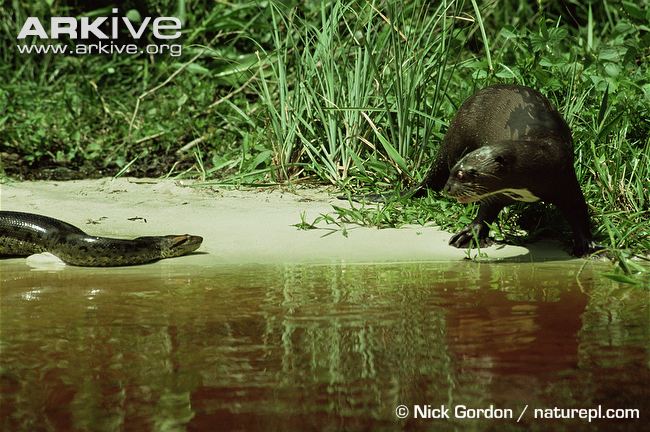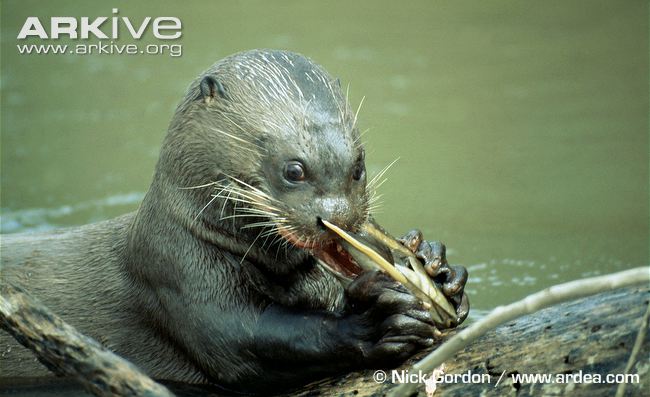Facts
The giant river otter is a successful, captivating species that has shown much strength in its perseverance for existence. It faces many struggles but has proven its capability of adapting to its environment in order to overcome these challenges. That's what makes this species so interesting. Below are more remarkable facts about the Pteronura brasiliensis that make it so unique!
 The giant river otter is an intriguing species! Unfortunately, many
threats by humans have caused this
species to become endangered. After The World Conservation Union added
the Pteronura brasiliensis to the endangered list, many people
have committed themselves to protecting and conserving the habitats of
the giant otter. Factors that led to the endangerment of the giant otter
include human contamination of the water with mercury and other wastes,
capturing of giant otter cubs for illegal pelt trade, and the
construction of hydroelectric dams which destroy the habitats of this
species (Cabral et al. 2010). Visit this
webpage to learn about another endangered species, the snow leopard,
that is also hunted for illegal pelt trade.
The giant river otter is an intriguing species! Unfortunately, many
threats by humans have caused this
species to become endangered. After The World Conservation Union added
the Pteronura brasiliensis to the endangered list, many people
have committed themselves to protecting and conserving the habitats of
the giant otter. Factors that led to the endangerment of the giant otter
include human contamination of the water with mercury and other wastes,
capturing of giant otter cubs for illegal pelt trade, and the
construction of hydroelectric dams which destroy the habitats of this
species (Cabral et al. 2010). Visit this
webpage to learn about another endangered species, the snow leopard,
that is also hunted for illegal pelt trade.
You may think that the only prey the giant otter eats is fish, but if that's the case, then you are wrong. Surprisingly, the giant otters' diets consist of certian amphibians, birds, and crustaceans as well (Cabral et al. 2010). Turtles and small anacondas are just a few of the desserts that the Pteronura brasiliensis enjoy along with its fish.
Giant otters are also said to be the most talkative species within the Lutrinae! This species generally socializes with their individual families of up to seven members, including the parents and offspring. As they go off on their own to hunt for food or look for acceptable altitudes to build their dens, these families need to be able to keep in contact with each other so as not to get lost or lose an individual. They are visually able to recognize each other by the cream-colored, etched markings under their chins, which is a distinct pattern for each individual (Mumm et al. 2014). However, when giant otters are out of range from each other, they cannot use visual cues and instead turn to social calls. There are two different types of calls that giant otters make to one another based on their distance of interaction. If the otters are far away from each other and out of sight, they use the "contact call," which informs the family of a member's position and that they should reunite. However, when family members are close together and in eyesight, giant otters use a "humming" call, which helps the individuals communicate about movement or helps the parents to soothe their cubs (Mumm et al. 2014). Each giant otter has their own individual call identity.
If you are interested in learning about how organisms communicate with each other, visit this website to see how the orangutan calls to its family and fellow species. Also, just as giant river otters have unique markings under their chins to help identify each other, the thirteen-lined ground squirrel is a unique organism to get to know in terms of fur patterns as well!


